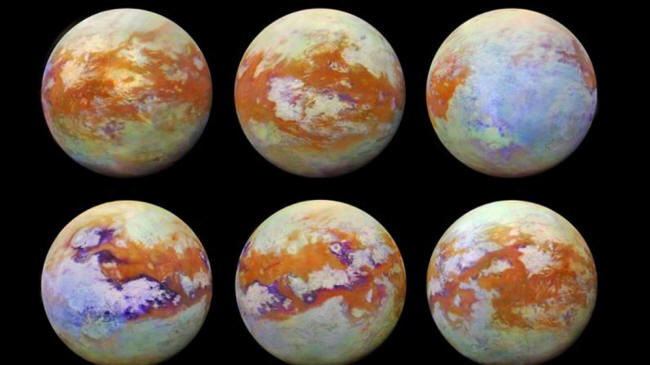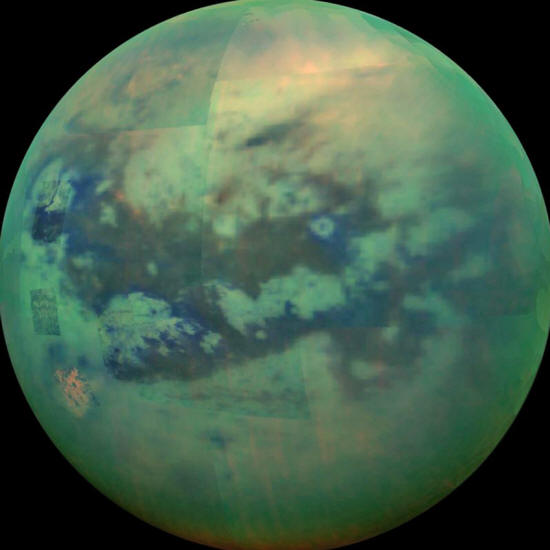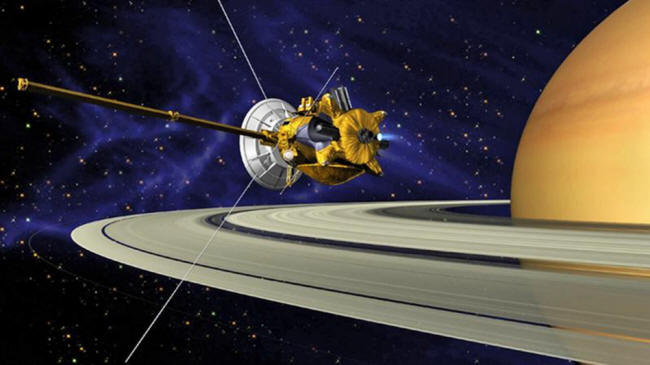|

May 01, 2022
from
BBC Website

These six infrared images of Titan
were
created using 13 years of data
Could a moon
near Saturn be the most Earth-like planet out there?
That's what scientists from NASA are looking into, as they study
Saturn's largest moon:
Titan...
They're trying to work
out how its landscape formed.
They say that Titan has seasons, rains, rivers and even seas. But
before you get too excited, it won't be water that is sloshing
around, but liquid methane, and the gust winds will be nitrogen!
Planetary experts from the University of Stanford in California -
alongside colleagues from NASA - are studying Titan's landscape
closely - as it's seen as a potential place for humans to set up a
future base.

This image of Titan
allows you to peer through
the thick atmosphere.
Using information from the
Cassini mission, the team have been
working on a project to understand how seasonal changes could have
shaped a very Earth-like structure of mountains, ice, sand dunes and
wide plains rather than just a windy dusty desert.
On Earth, rocks and minerals get eroded by water and end up moving
around the planet as tiny grains.
They are moved by winds
and rivers to new places where they settle and turn back into rocks.
Those rocks then continue forming, being eroded, and reforming, over
millions of years to form the landscapes we all see.
Experts think the same thing could be happening on Titan - just with
very different minerals.

Nasa's Cassini mission
spent years studying and taking photos
of Saturn and its moons
Mathieu Lap˘tre, from Stanford's School of Earth, Energy &
Environmental Sciences said:
"Our model adds a
unifying framework that allows us to understand how all of these
sedimentary environments work together.
If we understand how the different pieces of the puzzle fit
together... then we can start using the landforms left behind...
to say something about the climate or the geological history of
Titan - and how they could impact the prospect for life on
Titan."
|




